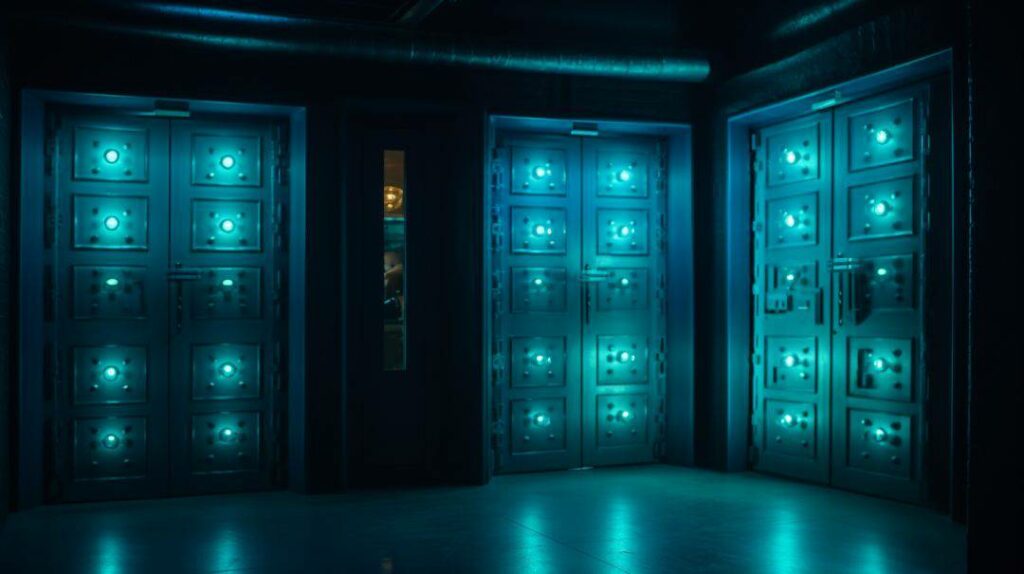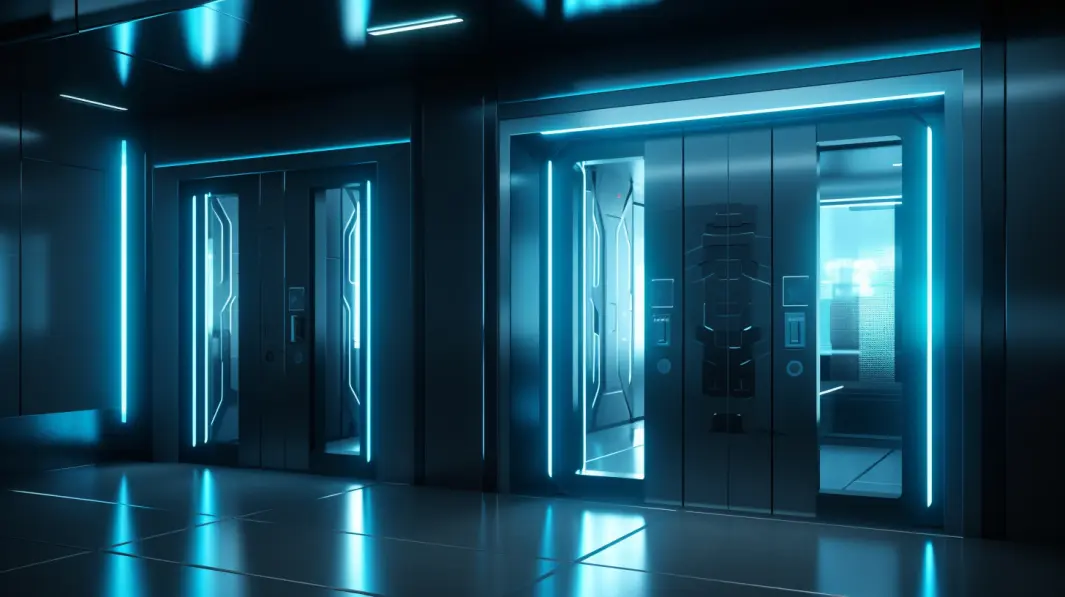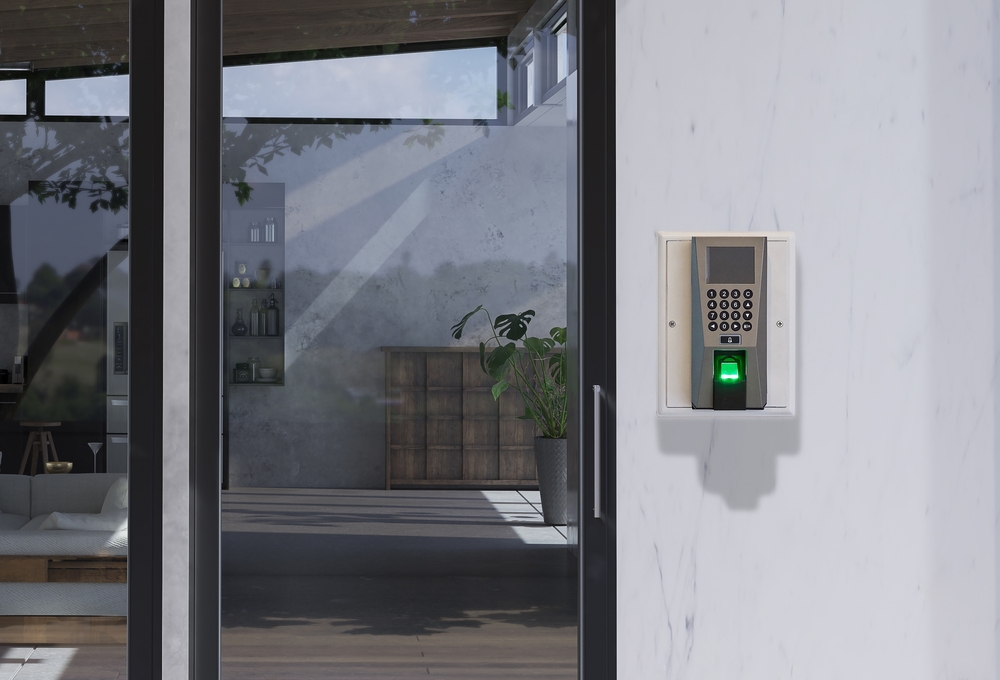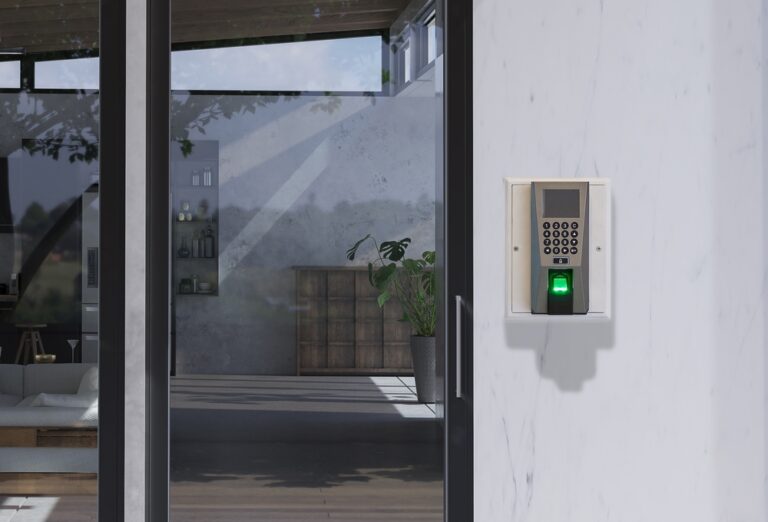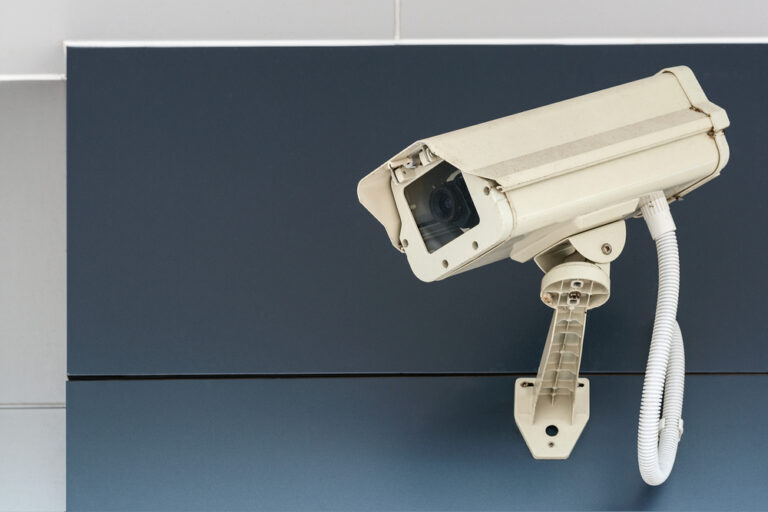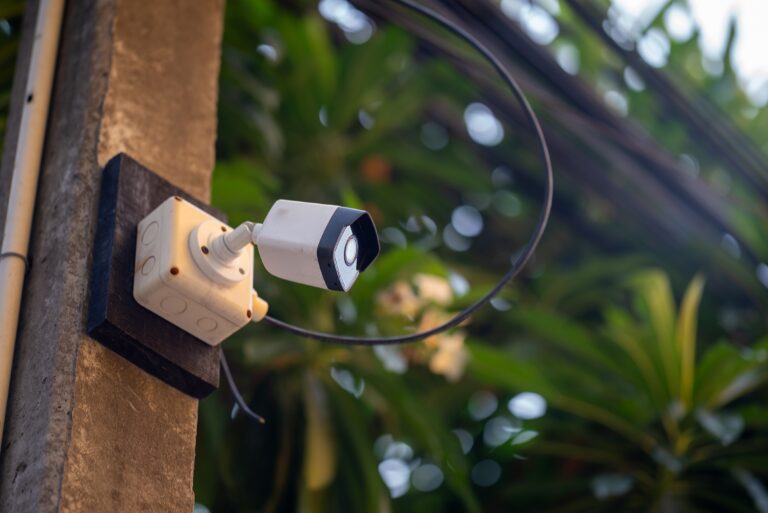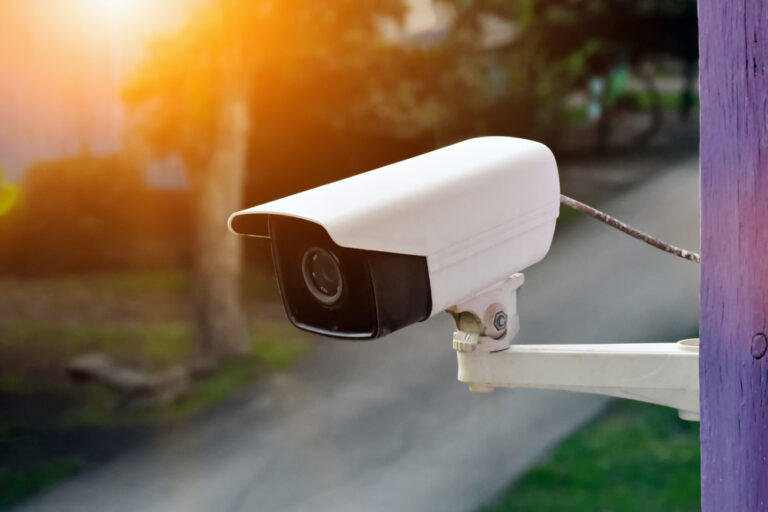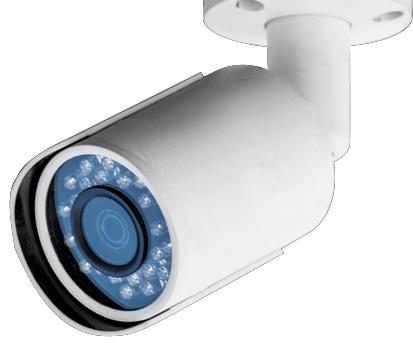- 1) Key Takeaways
- 2) What is a Maglock?
- 3) Types of Maglocks
- 4) How Maglocks Work
- 5) Benefits of Using Maglocks
- 6) Mounting and Installation of Maglocks
- 7) Testing and Maintenance of Maglocks
- 8) Considerations for Maglock Installation
- 9) Cost of Maglocks
- 10) Conclusion
-
11)
FAQs
- 11.1) What are maglocks and how do they work?
- 11.2) How does one choose between fail-safe and fail-secure maglock types?
- 11.3) Can I install a Maglock at my home?
- 11.4) What should I consider while choosing a Maglock?
- 11.5) Does installing a Maglock need professional help?
- 11.6) Are there any disadvantages to using Maglocks?
Are you struggling to understand the complexities of maglocks and their benefits? It’s a fact: magnetic locks, or “maglocks,” are one of the most reliable types of modern locks used in today’s security systems.
In this ultimate guide, we’ll unlock everything you need to know about these devices—how they work, how to install them, and why they’re considered superior in certain scenarios.
Keep reading – your roadmap to better building security is just a scroll away!
Key Takeaways
- Maglocks, or magnetic locks, use electricity to create a strong locking force. They offer better security than traditional locks.
- There are many types of maglocks such as standard, slimline/mini, mortice, double and more. Each type has unique features and benefits for different situations.
- Some maglocks can handle tough conditions like outdoor weather or fires. Others provide advanced features like biometric access control.
- Installation of maglocks is usually straightforward and they often need less maintenance compared to analog locks.
What is a Maglock?
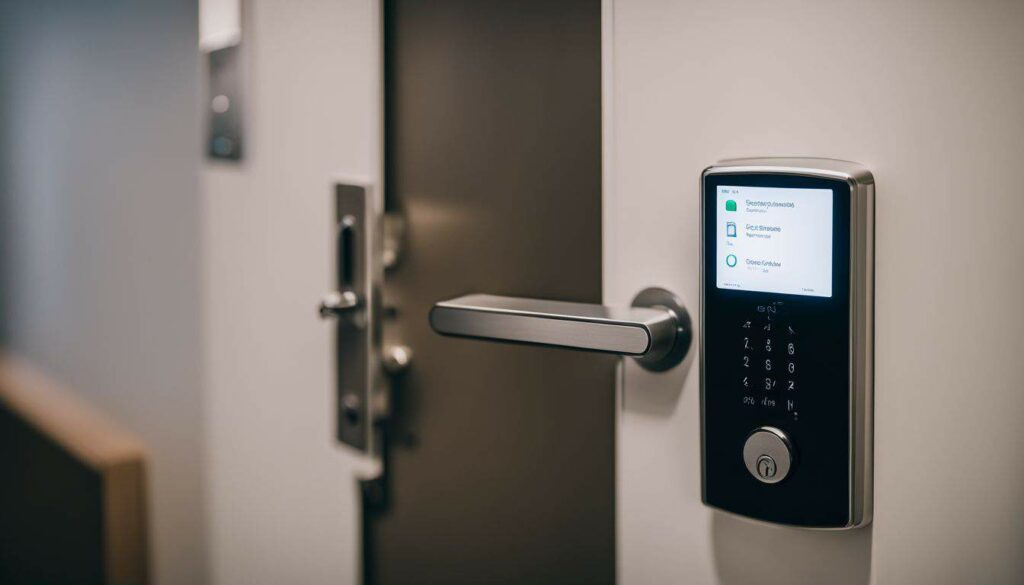
A maglock, short for magnetic lock, is a door locking system that utilizes an electromagnetic field to secure doors. Unlike traditional locks, which rely on mechanical components like bolts and latches, maglocks use electricity to create a magnetic force.
This force holds the door securely closed until the power supply is interrupted or the remote access control signals it to open. In comparison to analog locks, maglocks offer enhanced security measures through keycard or biometric access control systems.
Definition and function

Maglocks, short for magnetic locks, are modern locking systems that utilize the power of electromagnetism to secure doors and gates. This type of lock consists of two main elements: an electromagnet and an armature plate.
The electromagnet attaches to the door frame while the armature plate affixes to the door itself. When activated or powered, a strong magnetic pull is created between these parts, keeping the door securely closed.
Maglocks require continuous electrical power to maintain their hold; hence they offer a fail-safe mechanism – if there’s a power outage, the doors automatically unseal allowing for easy exits in emergencies like fire outbreaks.
These unique features make maglocks integral components in many commercial security systems around today.
Comparison to analog locks
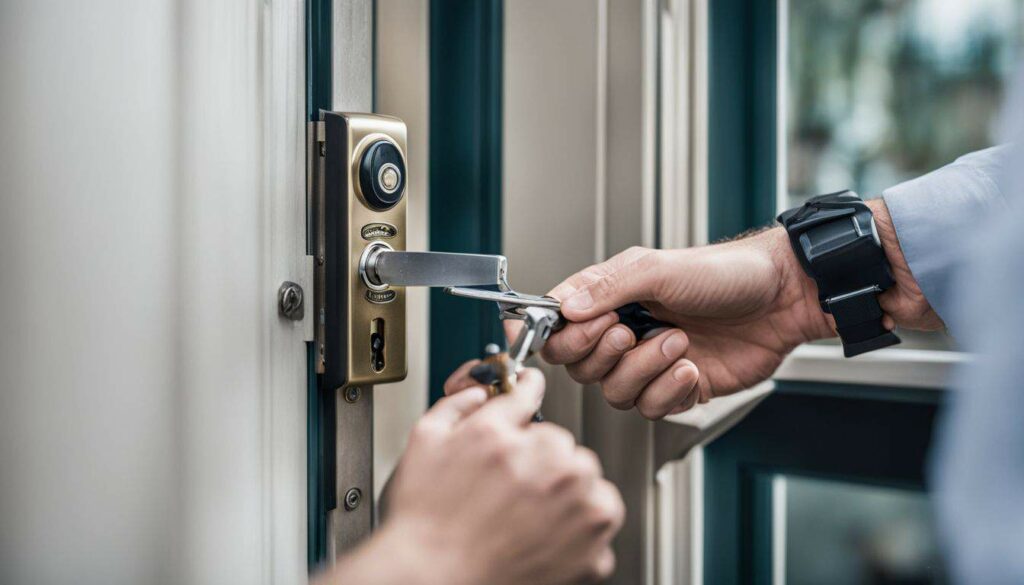
Comparing Maglocks to analog locks brings out their unique features and benefits.
| Feature | Analog Locks | Maglocks |
|---|---|---|
| Security Level | Generally lower due to susceptibility to lock picking and bumping. | Higher, as Maglocks are difficult to tamper with and can withstand up to 200 pounds of pressure. |
| Access Control | Limited as analog locks require physical keys for access. | Highly efficient, can be integrated with access control systems for better security. |
| Installation and Maintenance | Analog locks typically require professional installation and regular maintenance. | Maglocks are easy to install and require minimal maintenance. |
| Use Cases | Typically used in residential settings. | Primarily used in commercial establishments and institutions for securing doors. |
Types of Maglocks
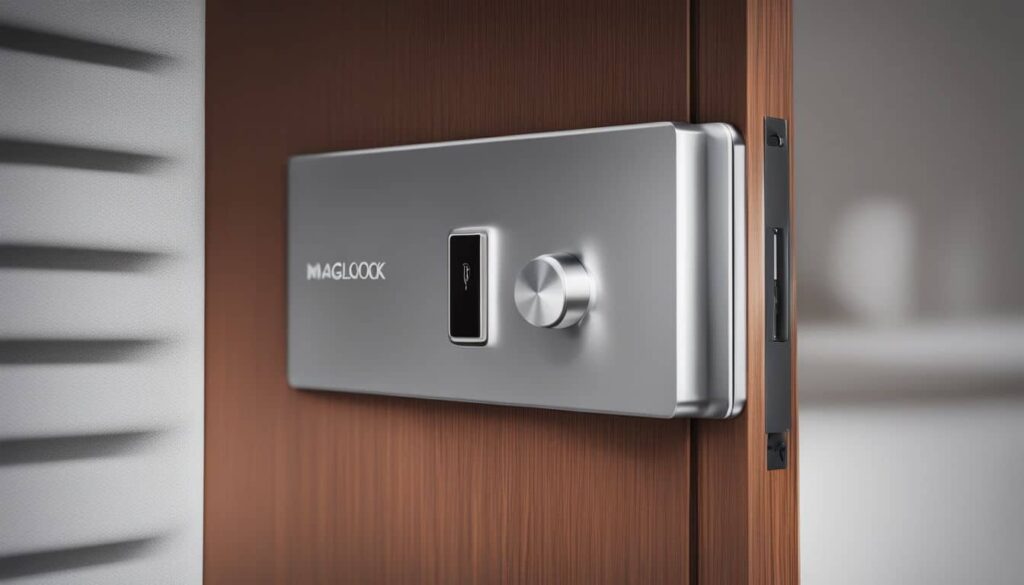
Maglocks come in a variety of styles to cater to different security needs. The standard maglock is the most common, providing robust security for many applications. Slimline or mini maglocks offer a perfect solution when space is limited, while mortice maglocks are neatly concealed within the door frame for a sleek finish.
The double maglock offers twice as much holding force, suitable for high-security areas. Architectural maglocks or pull handles enhance aesthetics without compromising safety. Externally rated and fire-rated maglocks provide top-notch protection against outdoor elements and fire hazards respectively.
Door retaining magnets hold doors open during normal operation, then release during alarm conditions to allow doors to close safely. Specialist Maglocks can handle unique safety requirements whereas shear locks offer strength and flexibility by combining the benefits of an electromagnetic lock with a mechanical locking mechanism.
Standard Maglock
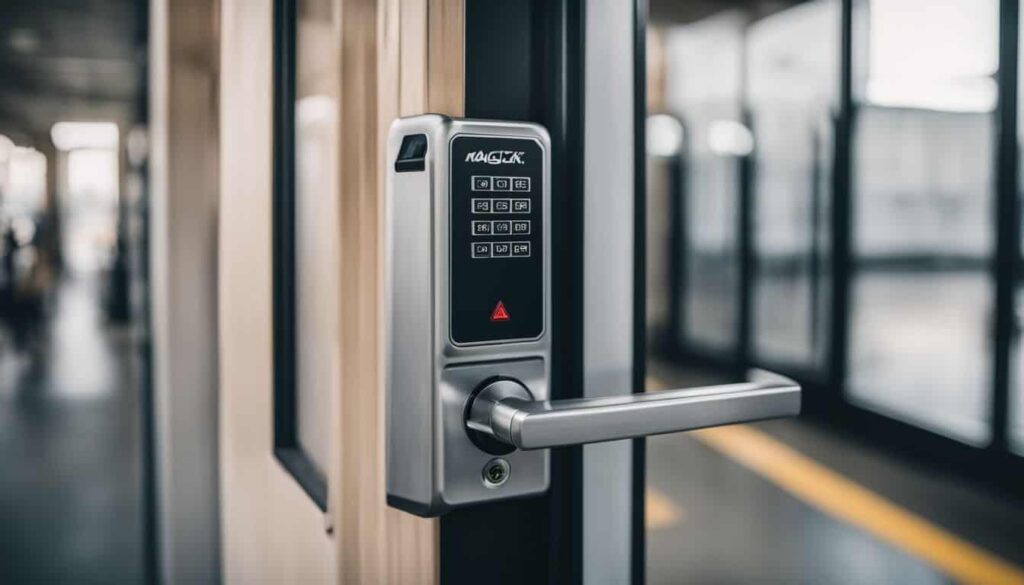
Standard Maglocks are a prevalent type of electromagnetic lock known for their robust and reliable mechanism. They generate a strong magnetic force that can hold up against pressure starting from 200 pounds all the way to higher levels, ensuring high levels of security.
Their straightforward installation process makes them a popular choice among commercial buildings and institutions. These maglocks require power to maintain the holding force, providing a fail-safe locking system.
Being able to integrate with access control systems, they offer enhanced security measures effectively controlling access to restricted areas in various applications.
Slimline/Mini Maglock
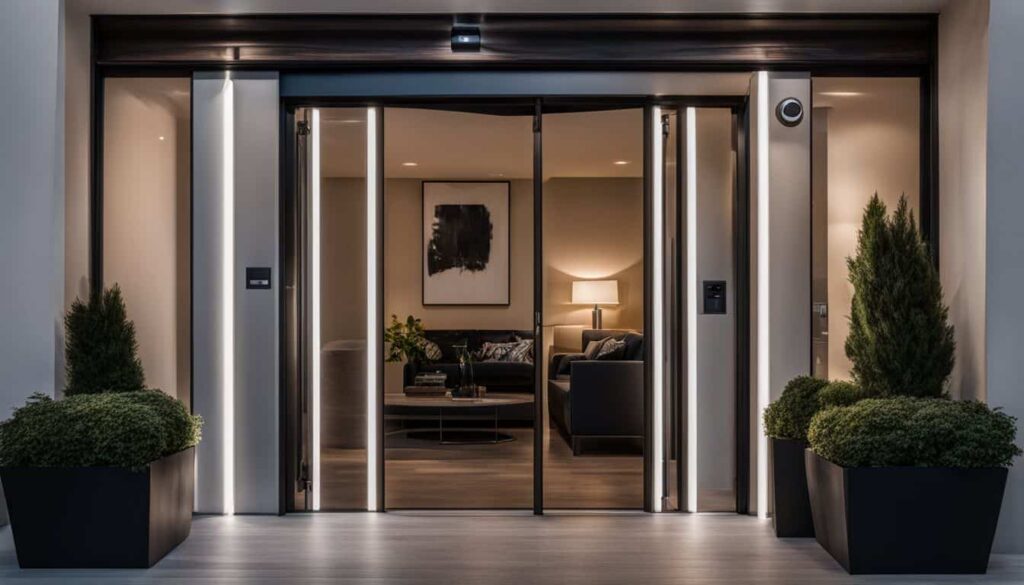
Slimline or Mini Maglocks serve as an excellent choice for securing slim doors or compact spots where installing a standard maglock might be challenging. Despite their smaller stature, these types of electromagnetic locks still deliver robust holding force up to 600 pounds in some models, ensuring optimal door control and secure entry.
Ideal for residential use or commercial applications with small access doors, Slimline/Mini Maglocks capture the benefits of a magnetic locking system in a reduced size. Known for their straightforward installation process and compatibility with many access control solutions, they provide reliable security without compromising on aesthetics due to their discreet design.
Mortice Maglock
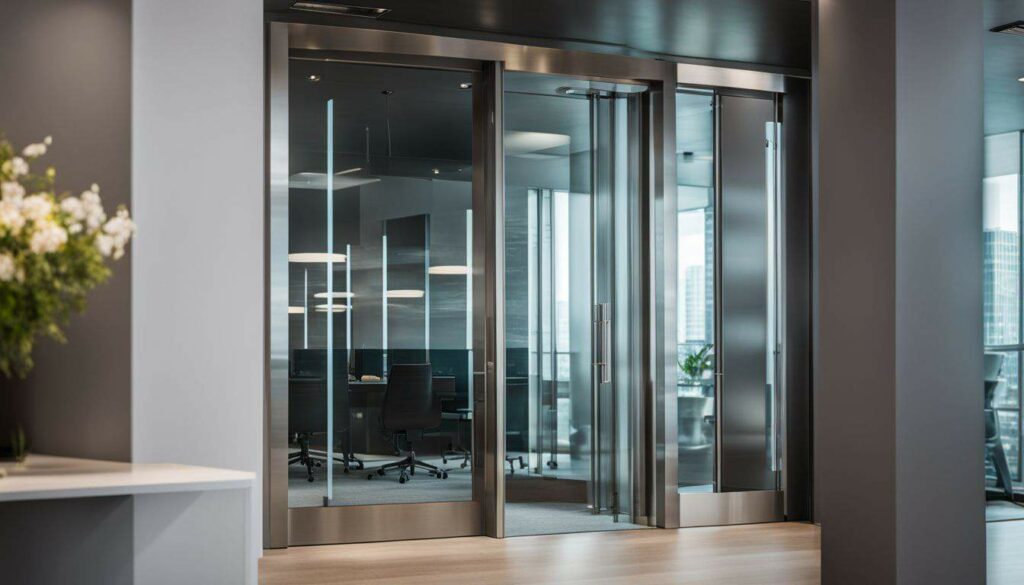
A Mortice Maglock combines the security of a traditional mortise lock with the modern convenience and high-security features of an electromagnetic locking system. The unique design allows this type of maglock to fit within the door frame itself, providing a seamless look while maintaining strong holding force.
Installation of this lock is relatively straightforward, though it does require some modification to your door or gate. This type of maglock can have a holding force ranging from 200 pounds all the way up to higher levels, offering incredible security for both residential and commercial properties alike.
Offering fail-safe operation, Mortice Maglocks ensures that in power failure scenarios, doors remain unlocked for safe emergency evacuation. Despite their sophisticated technology, these locks maintain easy access control solutions suitable for various applications such as securing doors in commercial buildings or institutions.
Double Maglock

Double Maglocks deliver twice the security by using two electromagnetic locks in tandem. Typically installed on double doors or larger entryways, these robustly designed locks ensure higher overall holding force.
This can go as high as 1200 pounds of pressure for some models, making them an optimum choice for securing high-risk areas like banks or government buildings. The dual lock arrangement is particularly beneficial where added protection is needed against attempts to forcibly open doors.
With power supplied, they maintain a secure hold; during power loss, they release immediately providing safe egress – a fail-safe operation that makes Double Maglocks both dependable and compliant with safety regulations.
Architectural Maglock or Pull Handle
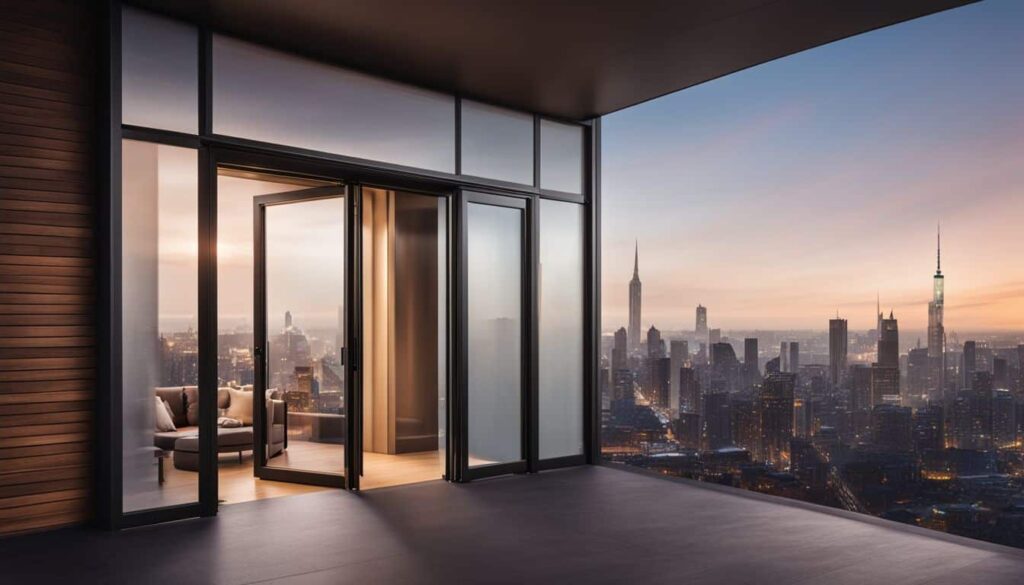
Architectural maglocks, also known as pull handle locks, offer advanced security solutions for both commercial and residential buildings. They rely on electromagnetic technology to maintain a secure lock, providing substantial holding force that ensures doors stay closed until the power supply is intentionally cut off.
Designed with aesthetics in mind, architectural maglocks seamlessly merge with door designs without compromising their functionality or strength. These types of magnetic locks are ideal for high-traffic areas where visual appeal plays an important role alongside security needs.
Their easy installation process allows them to be widely used in modern building infrastructure.
Externally Rated Maglocks

Externally rated maglocks stand as an excellent security solution in challenging environments. They are engineered with weather-resistant features, making them perfect for operations exposed to outdoor elements such as rain or snow.
These locks showcase a solid holding force that ensures robust, reliable security for exterior gates and doors. They effectively control access to restricted areas while integrating smoothly with other access control systems.
From residential fences to commercial building entryways, externally rated maglocks provide enhanced protection against unauthorized access.
Fire Rated Maglocks
Fire Rated Maglocks are specially designed to withstand extreme heat and fire situations. They play a crucial role in maintaining safety during emergencies by locking the door securely until an authorized access or unlock signal is given.
Unlike other types of maglocks, they meet specific fire codes and standards, making them a safe choice for buildings where fire compliance is mandatory.
These maglocks come with fail-safe features that ensure doors will automatically unlock during power outages or cut-offs. The use of Fire Rated Maglocks has become increasingly popular in commercial establishments and high-risk areas due to their superior performance under adverse conditions.
Their robust construction can resist temperatures up to 1,200 degrees Fahrenheit, providing reliable security even in intense heat scenarios.
Door Retaining Magnets
Door retaining magnets represent a unique segment within the vast realm of maglocks. This type harnesses electromagnetic force to control access and maintain security in buildings, much like their counterparts.
They interact with metal plates on doors, creating a strong magnetic field when energized. This magnetic pull keeps the door firmly shut until the power supply is cut off or overridden by an access control panel.
Door retaining magnets are favored for fire exit doors as they ensure fail-safe operation—doors swing open during emergencies once power is removed. Furthermore, due to their sleek design and ability to blend seamlessly into various architectural styles, door-retaining magnets have found popularity in interior use such as offices and residential spaces.
Specialist Maglocks
Specialist Maglocks offer a variety of advanced features designed to meet specific security needs. Some models include biometric or key card access, offering an extra layer of protection and convenience for users.
Other specialist maglocks are engineered with fire safety measures in mind, automatically unlocking during emergencies to allow swift evacuation from buildings. For environments requiring more stringent access control, time-delay maglocks introduce a pause between the unlock command and the actual door opening—hindering potential unauthorized entries.
Specialist maglocks can also integrate with larger security systems for real-time monitoring and remote operation capabilities, ensuring optimal building safety at all times. These high-tech magnetic locks serve as robust tools for customizing your security solutions according to unique facility requirements.
Shear locks
Shear locks operate on a unique mechanism compared to other maglocks. These types of locks utilize both magnetic and mechanical force for securing doors, increasing the reliability factor.
The shear lock holds the door in place with an electromagnetic field when closed, and it uses a physical latch or ‘shear’ pin for additional security. This dual locking method provides enhanced levels of safety while maintaining quick access capabilities.
Because of their robust design, shear locks find use in high-risk environments like commercial buildings and institutions where extra security measures are necessary.
How Maglocks Work
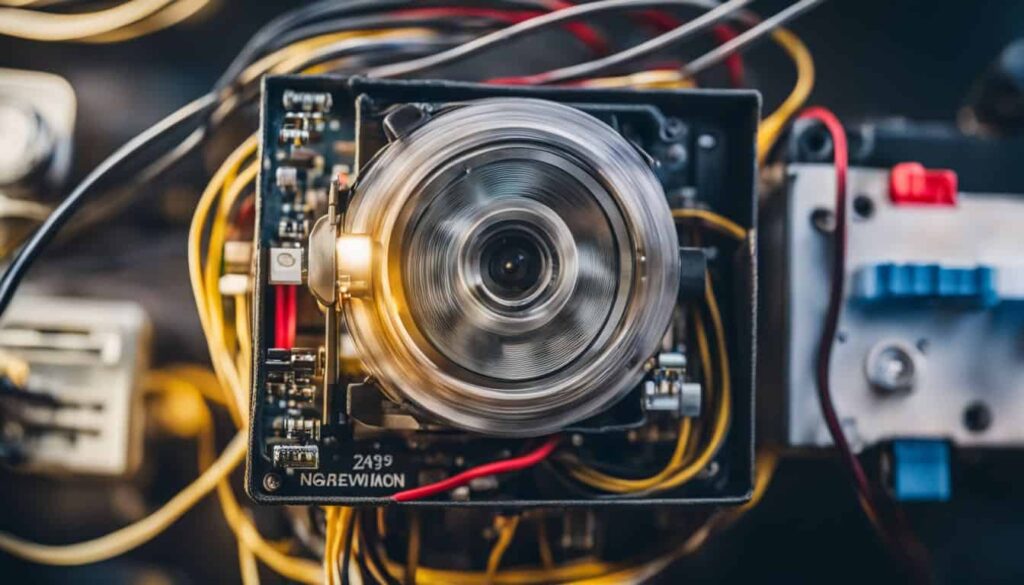
Maglocks, or electromagnetic locks, operate using electricity to create an intense magnetic field that secures the door. This fascinating mechanism involves principles of electromagnetism and varies between fail-safe and fail-secure types.
Intrigued? Dive in to discover more about how maglocks work!
Electromagnetic mechanism
Maglocks operate through the electromagnetic mechanism. It involves a current-carrying coil that creates a magnetic field, attracting the metal armature plate to secure the door. The lock remains engaged as long as electric current flows through it, providing consistent holding force and enhanced security.
Power interruptions disengage a maglock’s assembly due to its fail-safe feature, making it an ideal choice for emergency exits where doors need to open during power failures. Understanding this mechanism is essential for the proper installation and operation of maglocks in diverse applications such as commercial buildings or institutions.
Fail-Safe vs. fail-secure mechanisms
Fail-Safe or Fail-Secure mechanism defines how a lock responds when power is lost. The following table provides a comparative summary of these two mechanisms:
| Fail-Safe | Fail-Secure |
|---|---|
| Fail-Safe locks are designed to remain unlocked during a power outage or system failure. This design enhances safety by ensuring that people can exit the building in case of a fire or other emergency. This is one of the reasons why maglocks, which operate on a fail-safe mechanism, are a popular choice in commercial buildings or institutions. | On the other hand, Fail-Secure locks remain locked when power is lost. This ensures that the security of the property is maintained even in the event of a power outage. However, this could potentially create a safety hazard if people inside the building are unable to exit during an emergency. Fail-Secure locks are usually used in high-security applications where maintaining security is of the utmost importance, even in a power outage. |
It’s crucial to understand these mechanisms and choose the right one based on the specific needs and safety requirements of the building.
Benefits of Using Maglocks

Experience new levels of security and convenience with maglocks. Their unmatched strength provides robust protection, while the quick access feature allows seamless entry without hindering your fast-paced life.
Integrated into fire or intruder alarm systems, maglocks assure safety at all times. Curious to know more? Dive further into our ultimate guide!
Enhanced security
Maglocks stand as one of the most secure and reliable locks available in the market, creating an impenetrable fortress against unwanted intruders. They harness electromagnetic forces to hold doors securely shut, capable of withstanding several hundred pounds of force.
This high degree of security results from a fail-safe locking mechanism that needs continuous power to maintain its holding strength.
Being part of a comprehensive access control system escalates their security level further. Maglocks can recognize authorized individuals via biometric data or key cards. Unauthorized attempts trigger alarms or notifications, alerting personnel about possible breaches promptly.
These advanced features make maglocks an ideal choice for fortifying commercial buildings and institutions where safety is paramount.
Quick access
Maglocks shine in situations where quick access is crucial. This feature makes them an optimal choice for emergency services and security personnel who need fast entry during critical incidents.
Rather than fumbling with keys, or punching in codes, a simple swipe of an authorized key card or biometric scan can unlock the door almost instantaneously. Thanks to their electromagnetic nature, maglocks don’t require physical manipulation to function like traditional locks do — significantly reducing access time.
Faster entry not only enhances convenience but also strengthens overall security as potential intruders have less opportunity for forced entries. Plus, it’s ideal when there’s a surge of people coming in or going out regularly, such as in office buildings during rush hours.
Integration with fire or intruder alarm systems
Enhancing building security is a key feature of maglocks, which can easily integrate with fire or intruder alarm systems. They work hand in hand to provide an all-around protective barrier for any facility.
In the event of a detected threat, such as a break-in attempt or an outbreak of fire, maglocks enable quick responses. They have the ability to unlock doors automatically allowing for safe and swift evacuation.
Similarly, if your system detects unauthorized access through burglary attempts, the maglocks can trigger an immediate lockdown securing all entry points within seconds. This integration not only augments property safety but also gives occupants much-needed assurance about their overall security.
Mounting and Installation of Maglocks
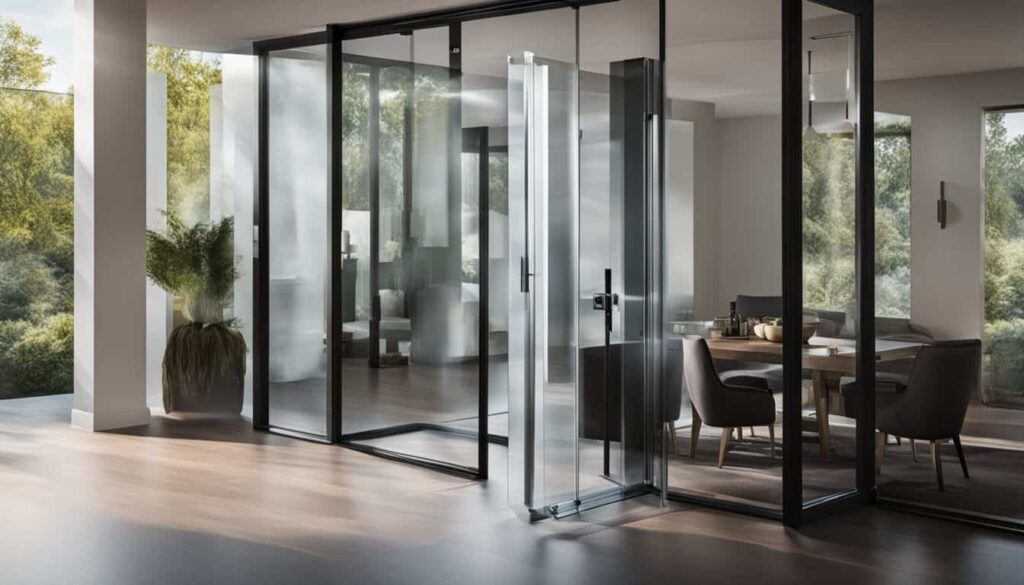
This section provides a step-by-step guide to the installation process of maglocks, discussing various components like mounting brackets and top plates. We explore different mounting options such as Z&L Brackets, Adjustable L Bracket, and tools specific for glass doors like the Saddle/U Bracket.
It also highlights key elements like Armature Back Plate and Housing that are crucial in securing your maglock. Lastly, we delve into Transom/Architectural Housing which plays an important role in maintaining the aesthetic appeal while ensuring robust security with your maglock installation.
Mounting brackets
Mounting brackets play a key role in the installation process of maglocks. They provide a secure base to attach the magnetic lock, increasing its effectiveness and safety. These components come in different forms to accommodate various door types and installation needs.
The construction of mounting brackets ensures they can withstand significant pressure without compromising their structure or function. Many are made from robust materials like steel or aluminum for optimal rigidity and durability.
As such, when a maglock is properly mounted using appropriate brackets, it provides superb security against attempted forced entry.
Top Plate and Extended Top Plate
Top Plate and Extended Top Plate are essential components in the mounting process of maglocks. The top plate, often used for overhead door installations, provides stable support to the lock system.
As for the extended variant, it’s designed for doors with a deeper reveal. This type is longer than its standard counterpart and works perfectly for securing a wider range of door types effectively and efficiently.
Both these plates increase the stability of your security system while also ensuring proper alignment between the magnet and armature plate, which is critical in maintaining optimal holding force from your maglock setup.
Z&L Brackets
Z&L Brackets are an integral part of the maglock installation process. They aid in securely mounting the lock to different door types and frames, particularly inward opening doors.
Made from resilient materials like stainless steel or aluminum, these brackets ensure continued functionality of a maglock by providing a sturdy support structure. The configuration of Z&L Brackets allows for custom adjustments to accommodate various door dimensions and alignments.
This ensures a perfect fit that maximizes the holding force exerted by the magnetic lock on the armature plate. Their robust build quality bolsters your security measures making them virtually tamper-proof, fulfilling one crucial aspect needed in commercial buildings or institutions where enhanced protection is paramount.
Adjustable L Bracket
Adjustable L Brackets are crucial components in a maglock installation. They fit seamlessly into door frames and help to secure the magnetic lock on the door’s surface. Its design allows it to adjust for any gap between the door and the frame, ensuring that the lock aligns perfectly with the armature plate for optimal magnetization.
Installing Adjustable L Brackets is straightforward, contributing significantly to making maglocks one of the easiest security locks to set up. Despite their simplicity, these brackets can withstand substantial holding forces, often matching or exceeding those offered by standard maglocks themselves.
The strength of Adjustable L Brackets, combined with their versatility, makes them an important feature in enhancing building safety through access control solutions like maglocks.
Glass Door Saddle/U Bracket
The Glass Door Saddle/U Bracket is an essential component in a Maglock installation. It secures the armature plate to the door while ensuring even magnetic pull for optimal locking force.
This heavy-duty bracket caters especially to frameless glass doors which require additional support due to their design and material.
Crafted from high-strength materials, this kind of bracket boosts security by providing a firm grip on the door. Its unique U shape makes it compatible with various door thicknesses and types, expanding its utility across multiple applications.
From commercial buildings to institutions employing maglocks, Glass Door Saddle/U Brackets enable enhanced fortification and smooth functioning of these modern locks.
Armature Back Plate
The armature back plate plays a vital role in the functioning of a maglock. This component receives the magnetic force from the maglock, allowing secure locking and unlocking. Made from steel, it has high magnetic permeability to enhance the lock’s holding force.
The armature back plate must align perfectly with the magnet for optimal performance. Its installation is simple but demands precision for the effective operation of a maglock system. Regular checks ensure its proper alignment and maintenance extend its lifespan significantly, boosting your security measures long-term.
Choose an appropriately sized armature backplate considering door size and weight; this aids smoother operating processes and ensures reliable access control solutions.
Armature Housing
The Armature Housing, a significant component in the Maglock system, serves as a protective cover for the armature plate. This casing shields the magnet’s operative parts from external wear and tear that could compromise its functionality over time.
The enclosure takes on additional importance in outdoor installations where maglocks are exposed to adverse weather conditions, helping to maintain their performance and lifespan despite environmental factors.
Installation may require specific tools or techniques depending on the housing model and door type; thus, careful attention must be given during this step of mounting your maglock system.
Transom/Architectural Housing
Transom or architectural housing refers to a type of bracket used in the installation of maglocks. This design primarily accommodates overhead installations, typically on glass doors with metal frames or transoms.
It provides a secure and visually pleasing solution for situations where standard brackets may not be appropriate. Utilizing this housing involves affixing it to the top section of the door, ensuring that the Maglock aligns perfectly while offering high levels of security without compromising aesthetics.
This method enhances building security by positioning Maglocks out of easy reach, reducing chances of tampering or forced entry attempts.
Testing and Maintenance of Maglocks
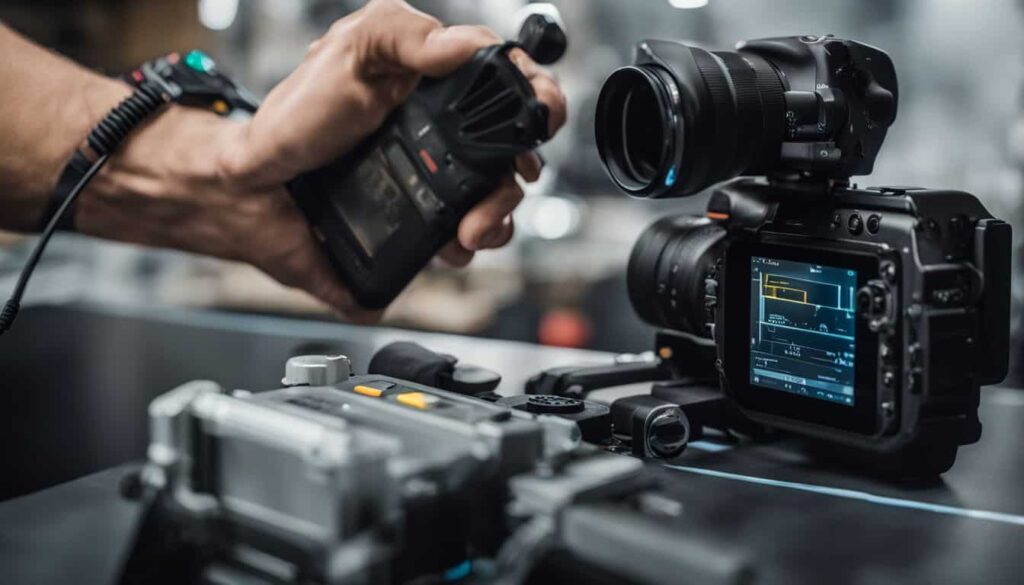
Regular testing of maglocks is crucial to ensure consistent performance and security. Conduct tests by applying force to the locked door, and simulating attempts at unauthorized access.
Address any issues immediately to maintain the integrity of your security system. Regular maintenance includes cleaning magnetic surfaces, checking power supply units, and inspecting for signs of wear or damage on armature plates or brackets.
Always refer to your manufacturer’s guidelines for specific maintenance recommendations. Professional servicing may be required for complex problems beyond basic upkeep tasks.
Proper testing procedures
Testing procedures for maglocks form a critical part of their maintenance regimen. These procedures verify the strength of the magnetic field and ensure the lock’s fail-safe operation during power outages.
Normally, technicians use handheld testing devices to measure voltage and electrical current flow through the magnet coil. This process also includes checking door alignment and monitoring time-delay functionality if it is implemented in your system.
It’s beneficial to conduct these tests periodically, even when no operational issues are apparent, as this helps maintain optimal functionality of your magnetic locks over time.
Maintenance requirements
Maglocks demand fewer maintenance requirements as compared to traditional locks. This is mainly because of their simplistic design that has no moving parts; eliminating wear and tear associated typically with mechanical components.
However, regular checks are required to ensure optimal operation. These include inspecting the power supply to verify it’s delivering the correct voltage and checking if any rust or debris might impede the lock’s function.
Also, a vital part of maglock maintenance is making sure that door alignment remains precise since misalignment can reduce its holding strength significantly. It should be emphasized that despite these guidance procedures, professional assistance might be necessary for complex scenarios to maintain maglock efficiency over time.
Considerations for Maglock Installation
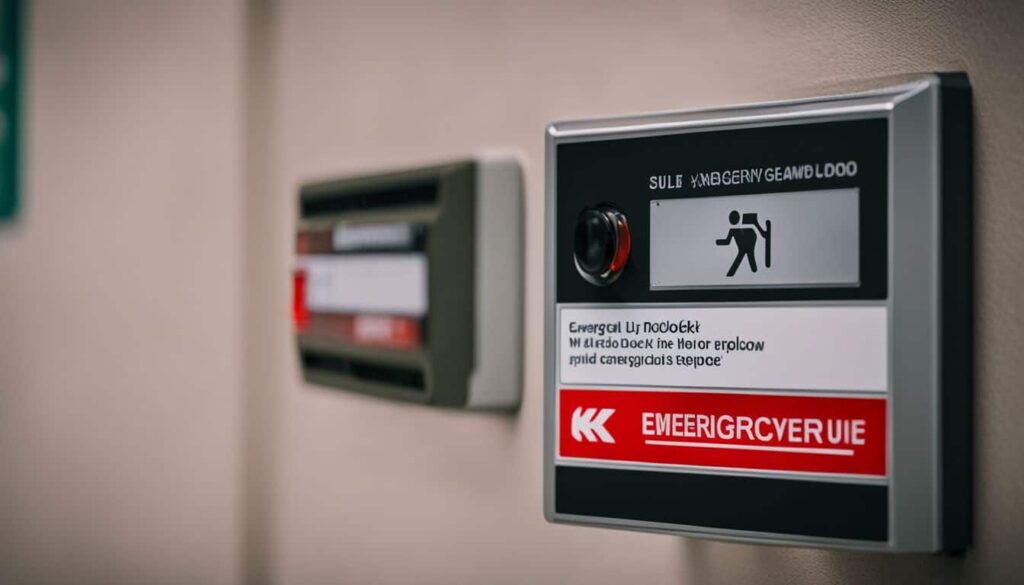
When planning a maglock installation, ensure your setup complies with fire regulations. Scrutinize the emergency evacuation procedures to guarantee secured exits during emergencies.
Be aware of any building permit requirements that could affect your project. Evaluate door and frame construction for compatibility with selected maglocks. Finally, confirm power availability for uninterrupted operation of your magnetic locking system.
Fire compliance
Compliance with fire safety regulations is a crucial part of Maglock installation. The lock must not impede the performance of your building’s fire doors or emergency evacuation plans.
In fact, building codes often require maglocks to automatically release when a fire alarm is activated, allowing for swift and safe exits during an emergency.
In certain jurisdictions, integrating maglocks with fail-safe operations into a structure’s overall fire protection plan might necessitate local authority approval, depending on where you’re installing them.
Therefore, it’s essential to familiarize yourself with the requirements set forth by your local authority having jurisdiction (AHJ) before carrying out any installation project involving maglocks to avoid violation penalties and ensure that your premises remain fully compliant with all necessary safety standards.
Emergency evacuation procedures
Emergency evacuation procedures play a significant role when installing maglocks. Often, the design of these locks adheres to fail-safe mechanisms which release the lock when power is cut off, allowing for swift exits in crisis situations.
This feature ensures that occupants can evacuate promptly and securely during emergencies. However, it necessitates reliable backup power sources to keep doors locked during non-emergencies when primary power fails.
Advanced maglock systems even integrate with alarm or alert systems to automatically unlock doors based on specific triggers such as fire alarms or intruder alerts. It’s crucial for institutions and commercial buildings to prioritize seamless evacuation methods while maintaining safety measures established by maglocks.
Building permit requirements
Securing a building permit is a crucial step before installing maglocks in your property. This authorization ensures that the installation of the electromagnetic lock system abides by local building codes and regulations, which may vary depending on where you live.
In most instances, authorities necessitate permits to ensure safety procedures are being followed properly, including adherence to fire compliance and emergency evacuation plans. Before beginning any installation work, make sure you have applied for and received the necessary approval from relevant local bodies or departments to avoid legal consequences in the future.
Door and frame construction
Door and frame construction play a crucial role in the overall efficacy of Maglocks. The type of material used for doors and frames significantly impacts the holding force of the magnetic lock.
Sturdy metals like steel or aluminum are most effective as they can hold up to high amounts of pressure, which is essential for secure locking. However, other materials like wood or glass do require special considerations during installation to ensure optimal function and safety.
Also, the proper alignment between the Maglock unit and its corresponding armature plate on the door is mandatory for successful functioning. An improperly installed system may lead to security breaches due to weak electromagnetic connections.
Therefore, careful planning around door and frame construction remains paramount while deciding on maglock installations.
Power availability
Understanding the power requirements for a Maglock system is crucial. These locks depend on an uninterrupted flow of electricity to function correctly. A reliable power source ensures that your magnetic locking system will provide the security you need and operate optimally.
Various options can guarantee the continuous delivery of power to your maglocks, even in situations when primary energy sources are unavailable, like during outages. For example, installing a backup battery or uninterruptible power supply (UPS) can ensure fail-safe operation by providing emergency reserves.
Cost of Maglocks
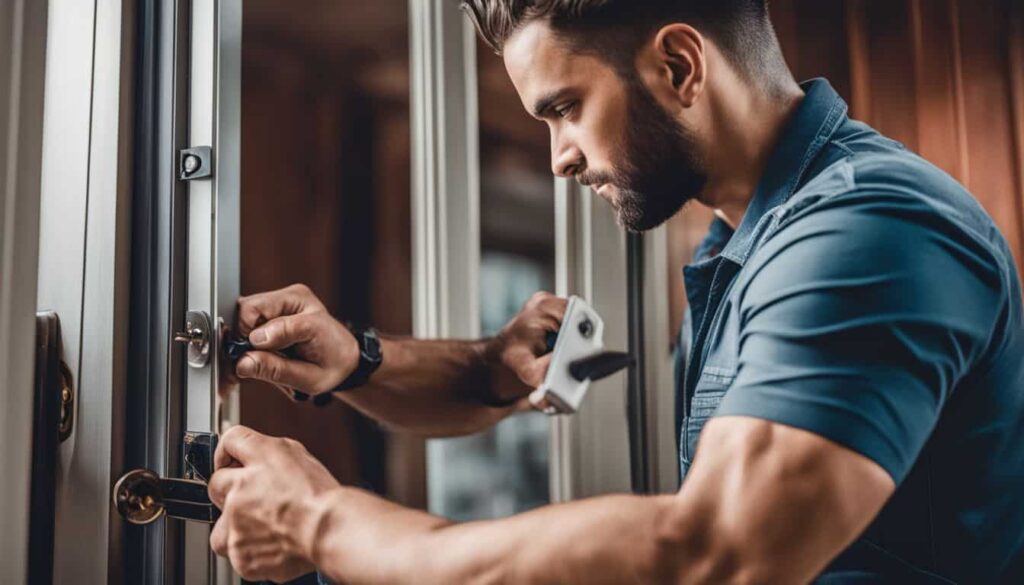
Exploring the cost of maglocks involves understanding various factors. These may include the type of maglock, complexity of installation, and additional features. Maglocks come in a range of prices to suit different budgets and needs.
High-end models with advanced features can be expensive, while standard models are more affordable. A professional installation might increase cost but ensures proper function and security.
Always budget for maintenance when considering overall costs as regular upkeep prolongs lifespan.
Factors affecting cost
Various elements influence the cost of maglocks. The type and size of the maglock play a crucial role in determining its price, with larger locks typically costing more due to their higher holding force.
The brand of the maglock can also sway the overall expense as well-known brands often charge a premium for their established reputation and proven reliability. Installation costs might surge if professional assistance is required, especially for complex systems that require precise alignment or integration with other security measures like access control panels or fire alarms.
Other factors such as voltage requirements, indoor vs. outdoor use, and additional features like time delay or remote unlock can further impact your final bill. Lastly, ongoing maintenance expenses to ensure optimal performance should be taken into account when considering total ownership cost over time.
Pricing range
Maglocks come in a wide variety of price ranges, largely depending on their features and specifications. The most basic models can be found for as low as $50, suitable for less demanding applications such as residential use or small businesses.
On the other hand, high-security commercial maglocks with advanced access control functions can cost up to several hundred dollars each. It’s also crucial to factor in additional costs like installation, power supply requirements, and any potential modifications to your door frame or infrastructure.
Therefore, the total investment goes beyond just the lock itself– proper installation and maintenance are key elements necessary for effective operation that may add up over time.
Conclusion
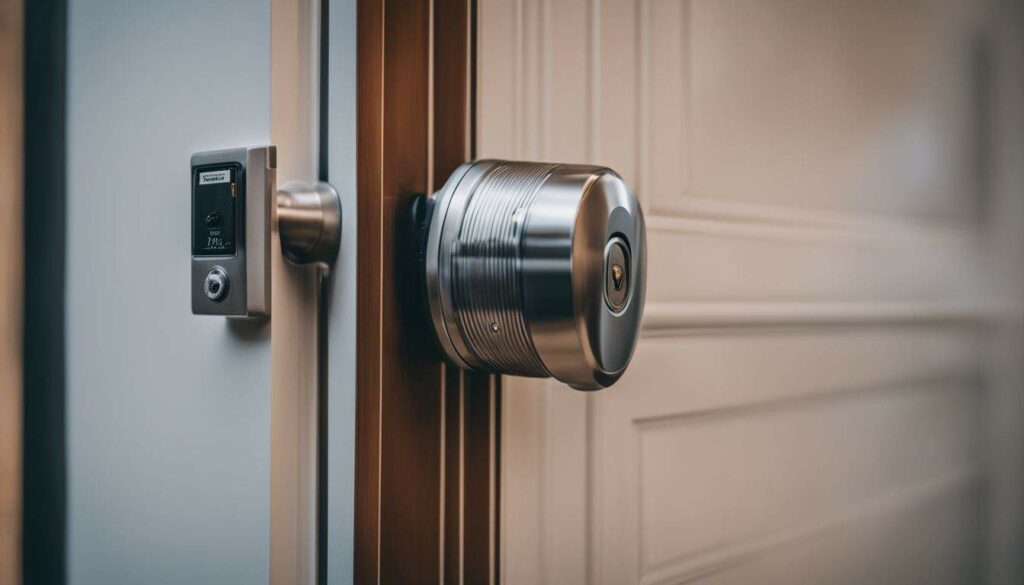
Grasping the intricacies of maglocks offers a valuable resource in your quest for top-notch security solutions. As you navigate through the world of locks and access control, this guide empowers your decisions.
You’ve unraveled key aspects like their functionality, types, benefits, installation process, considerations and cost. Now armed with expansive knowledge of maglocks- you can confidently optimize your building’s security!
FAQs
What are maglocks and how do they work?
Maglocks, or magnetic locks, are a type of electronic lock that uses an electromagnetic field strength to secure doors. They consist of two main components: a metal plate mounted on the door and an electromagnetic coil attached to the door frame.
How does one choose between fail-safe and fail-secure maglock types?
A fail-safe maglock automatically unlocks under power loss or during emergencies by disabling its magnetic flux. On the other hand, a fail-secure lock ensures the door remains locked even when there’s no power supply.
Can I install a Maglock at my home?
Yes! There are residential maglocks available that operate using low-voltage power supplies with backup batteries for added security.
What should I consider while choosing a Maglock?
When choosing a Maglock, you must consider its compliance with ANSI standards, magnetic pull force, the ability for delayed egress, and monitoring door status using sensors. Other factors include whether it is meant for indoor or outdoor use and if it comes with additional features like keypad access.
Does installing a Maglock need professional help?
Installation could be easy depending upon your skills in handling basic tools but referring to the installation guide will give you step-by-step instructions about securing mounting positions on either side of the door along with wiring diagrams for proper connections.
Are there any disadvantages to using Maglocks?
While its advantages include high security due to strong magnetic lock strength and automatic unlocking mechanism in emergencies; some potential disadvantages might be higher costs compared to traditional locks as well as technical complexities related with retrofitting existing doors especially sliding ones.

